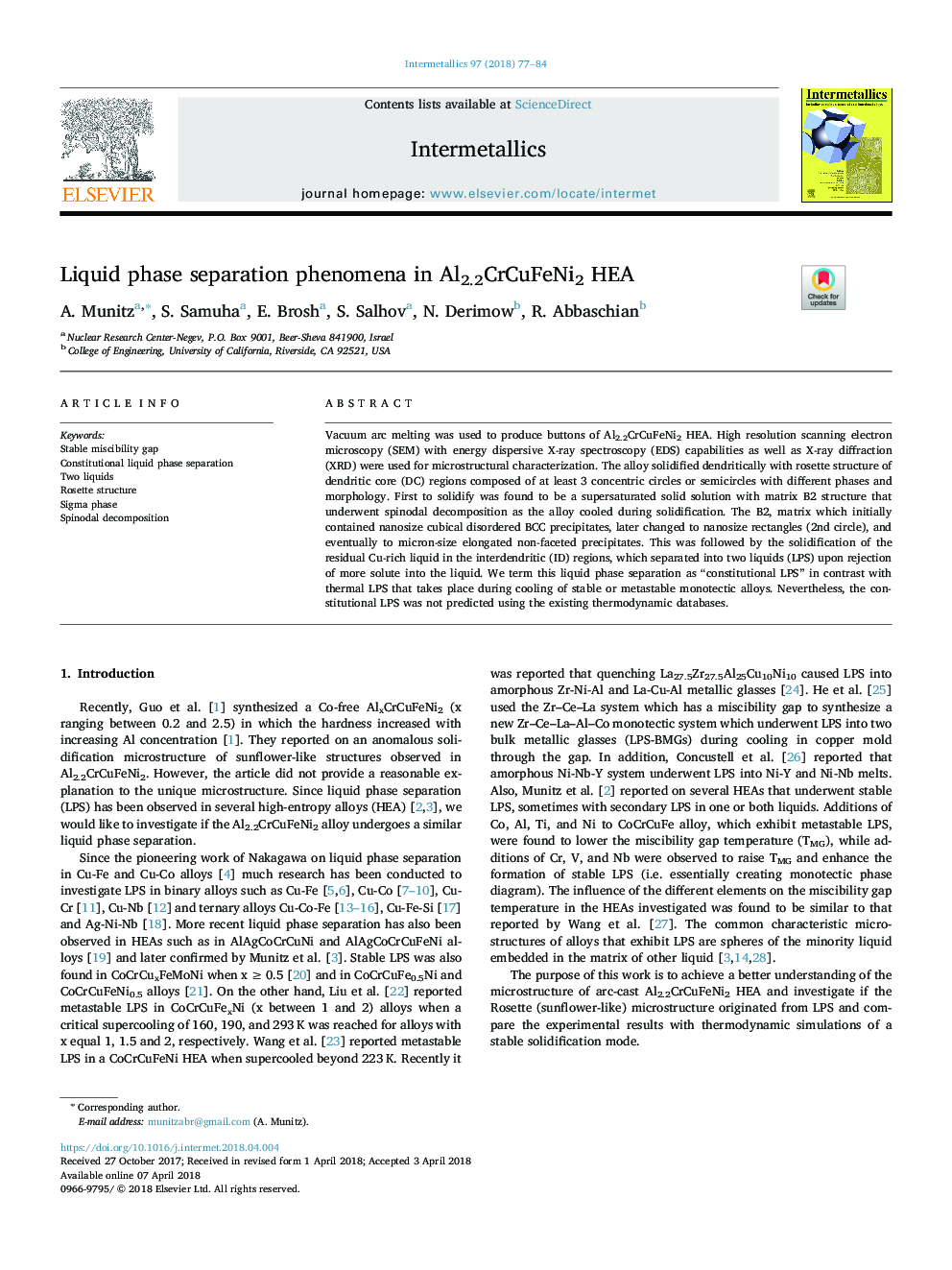| Article ID | Journal | Published Year | Pages | File Type |
|---|---|---|---|---|
| 7988301 | Intermetallics | 2018 | 8 Pages |
Abstract
Vacuum arc melting was used to produce buttons of Al2.2CrCuFeNi2 HEA. High resolution scanning electron microscopy (SEM) with energy dispersive X-ray spectroscopy (EDS) capabilities as well as X-ray diffraction (XRD) were used for microstructural characterization. The alloy solidified dendritically with rosette structure of dendritic core (DC) regions composed of at least 3 concentric circles or semicircles with different phases and morphology. First to solidify was found to be a supersaturated solid solution with matrix B2 structure that underwent spinodal decomposition as the alloy cooled during solidification. The B2, matrix which initially contained nanosize cubical disordered BCC precipitates, later changed to nanosize rectangles (2nd circle), and eventually to micron-size elongated non-faceted precipitates. This was followed by the solidification of the residual Cu-rich liquid in the interdendritic (ID) regions, which separated into two liquids (LPS) upon rejection of more solute into the liquid. We term this liquid phase separation as “constitutional LPS” in contrast with thermal LPS that takes place during cooling of stable or metastable monotectic alloys. Nevertheless, the constitutional LPS was not predicted using the existing thermodynamic databases.
Keywords
Related Topics
Physical Sciences and Engineering
Materials Science
Metals and Alloys
Authors
A. Munitz, S. Samuha, E. Brosh, S. Salhov, N. Derimow, R. Abbaschian,
